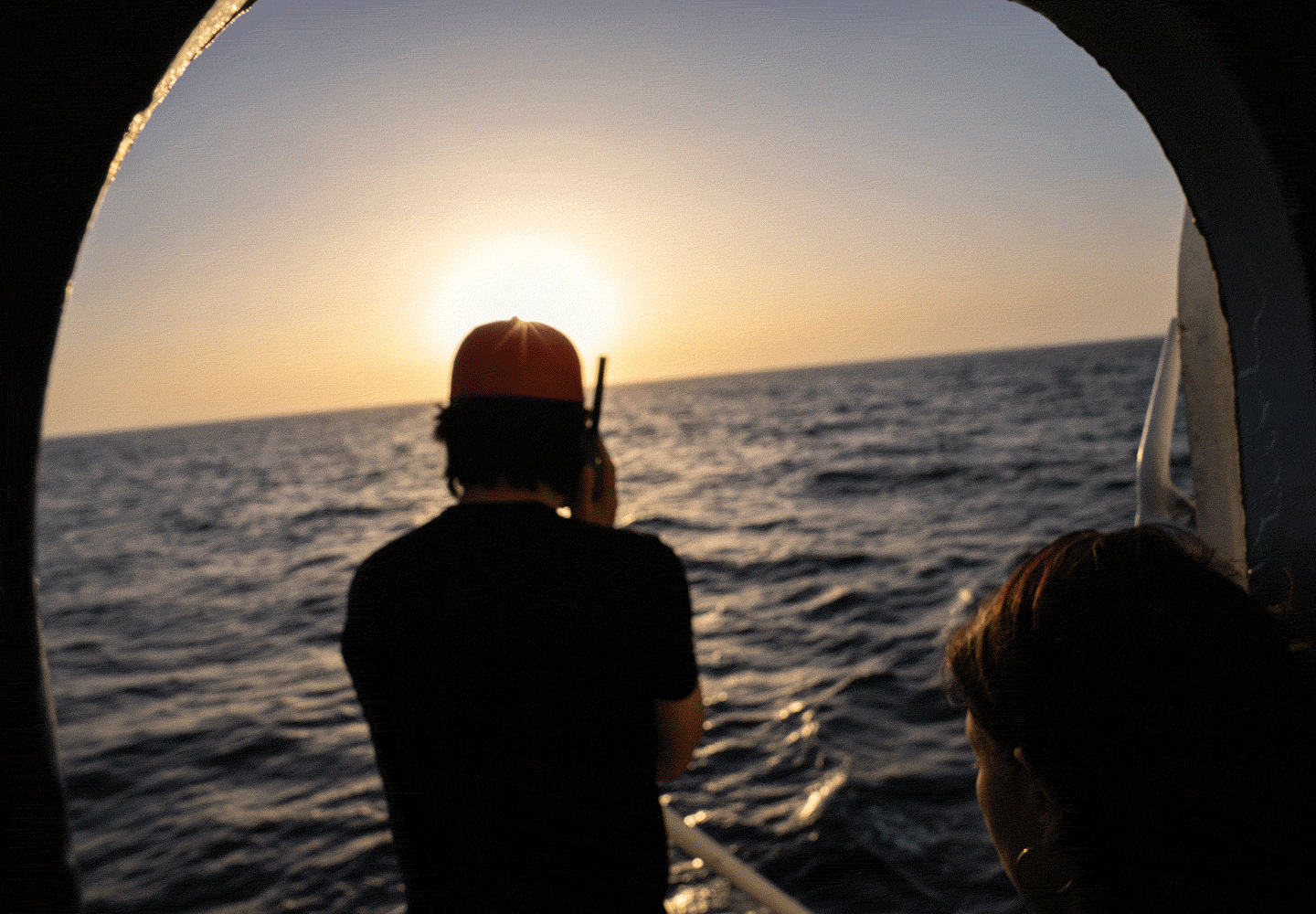Cable City Dance Cable City Sea
November 18, 2023–February 25, 2024
C/ Sant Adrià, 20
08030 Barcelona Catalonia
Spain
Hours: Tuesday–Saturday 12–8pm,
Sunday 11am–3pm
T +34 932 56 61 55
centredart@bcn.cat
Rossella Biscotti unravels layers of meaning and relational networks, as well as collective or individual imaginaries that alter the authorised version of the world in which we live. For the exhibition at Fabra i Coats, curated by Joana Hurtado, Biscotti presents two large installations, The City and The Journey, accompanied by two respective sculptural works, Trees on Land and Drifting. In between, a work connects them physically and conceptually: A Conductor, a recycled cable from a decommissioned nuclear power station that is connected to the Art Centre’s electrical supply and provides power for the entire exhibition.
On the ground floor, the site of The City takes us underground to interpret, preserve, and archive the remains of a prehistoric city. However, this creates a void where there was none, while generating new layers of decontextualised meaning (diaries, boxes, digital databases…). Similarly, the ceramics in Trees on Land, made from olive ash and clay, speak of the void left by the incinerated trees, burned in an attempt to contain the spread of a devastating plant bacteria. Excavation as an interpretative opening meets extraction as a hole that we actively manipulate from the present. A Conductor is an example of the interests hidden in a material that the artist reuses to reconnect with society. By pointing out burning issues as energy wars, nuclear power, environmental regulation and recycling, Biscotti creates a small short-circuit within the art institution, illuminating and connecting all the works—here invisibly, while above it becomes visible as a labyrinth of tentacles.
On the upper floor, the imageless narrative of The Journey immerses us in the sea, expanding the acoustic and metaphorical range of the 20-ton block of Carrara marble that is at the origin of the work. As part of a performance, the artist loaded this huge rock onto a merchant ship that navigated for three days a symbolic route between Italy, Malta, Tunisia, and Libya, and finally at a set point released it into the sea. This parable connects the exploitation of the Carrara quarries with one of the crucial transit points between Africa and Europe, through which thousands of migrants pass and die today, and through which fishermen and naval fleets have passed and perished in so many battles, from the Punic Wars to World War II. The ‘journey’ is therefore not only that of the stone, but of all of us following its path and of the implications it points to beyond itself. Thus, here, the waves of the sea become sound and electromagnetic waves, revealing all the textures of marble extraction or a high-sea voyage to tell us that there is no silent matter or landscape. In the same room, A Conductor lives with Drifting, a sculptural series that resembles plankton, the erratic body of microscopic organisms that float on the seabed and constitute one of the planet’s main oxygen producers.
Downstairs, darkness and emptiness forced us to sharpen our vision to search for traces of humanity and see to what extent we manipulate and transform our environment; upstairs, light and amplification of the most indiscernible kinds invite us to sharpen our hearing, to make evident the myriad interests surrounding us, and at the same time, to devote time and attention to what has been forgotten or neglected. Thus, Biscotti reveals what is usually unseen or deliberately overlooked, either because it is not perceptible, or is deliberately hidden. The lack of an absolute image or perspective that can unify the multiplicity of views and voices not only serves to reflect on the articulation of societies, present or past, but also allows for new perceptions of our commitment to the environment.



